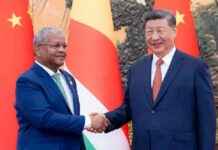Mandatory Military Service in Serbia: A Controversial Decision
The Serbian government is considering reinstating mandatory military service starting from September 2025, pending approval from the Parliament. This decision has sparked a debate among the Serbian population, with some supporting the move as a necessary step to strengthen the country’s defense capabilities, while others view it as a regressive measure that infringes on individual freedoms.
Under the new plan proposed by the government, young Serbs would be required to undergo 60 days of training and 15 days of military exercises. If the Parliament confirms the decision, young Serbian men could find themselves waking up at six in the morning in barracks for 75 days, with 60 days dedicated to specialized training and two weeks to exercises. This marks a significant shift from the voluntary military service that has been in place since 2011, where individuals aged 19 to 30 could choose to enlist.
Regional Context: Following Croatia’s Lead
The decision to reintroduce mandatory military service in Serbia comes in the wake of a similar move by neighboring Croatia, a NATO member. In Croatia, 4,000 to 4,500 young adults are set to undergo 60 days of compulsory military training from next year. This parallel decision has raised questions about whether the two countries are coordinating their defense strategies, particularly in light of regional tensions.
Military analyst Igor Tabak believes that the discussion around mandatory military service in Croatia may be more politically motivated than practical. He suggests that the issue serves as a talking point for certain politicians, with a focus on Serbia rather than other potential threats in the region. However, the implications of both Serbia and Croatia reintroducing conscription are significant for their respective defense capabilities and regional stability.
Implications and Challenges
The reintroduction of mandatory military service in Serbia poses several challenges and raises important questions. One key concern is the financial burden that conscription would place on the country’s budget. The cost of training and equipping thousands of young conscripts would need to be carefully considered in the context of Serbia’s economic priorities and other pressing needs.
Furthermore, the issue of conscientious objection must be addressed in both Serbia and Croatia. While the right to object to military service is protected by the constitution in both countries, the extent to which young people may choose this option remains to be seen. Balancing the need for a strong defense with respect for individual beliefs and values will be a delicate task for policymakers in the coming years.
In terms of European military practices, mandatory military service is already present in several countries, including the Baltic and Scandinavian nations, as well as in Austria and Switzerland. Germany and the Netherlands are also exploring alternative recruitment models, such as the selective approach adopted in Sweden. The diversity of approaches to national defense highlights the complex nature of security challenges in modern Europe.
In conclusion, the potential reinstatement of mandatory military service in Serbia represents a significant shift in the country’s defense policy. While some view it as a necessary step to bolster national security, others raise concerns about the impact on individual freedoms and the financial implications. The decision also reflects broader trends in regional defense strategies, with Croatia’s parallel move adding a layer of complexity to the discussion. As Serbia navigates these challenges, the role of conscription in shaping its military capabilities and national identity will be closely watched by observers both at home and abroad.









![Indie music fans gather at l’Antipode for [Face B] Kool Things soirée on Saturday night news-15112024-105933](https://shanghainewstv.com/wp-content/uploads/2024/11/news-15112024-105933-218x150.jpg)







